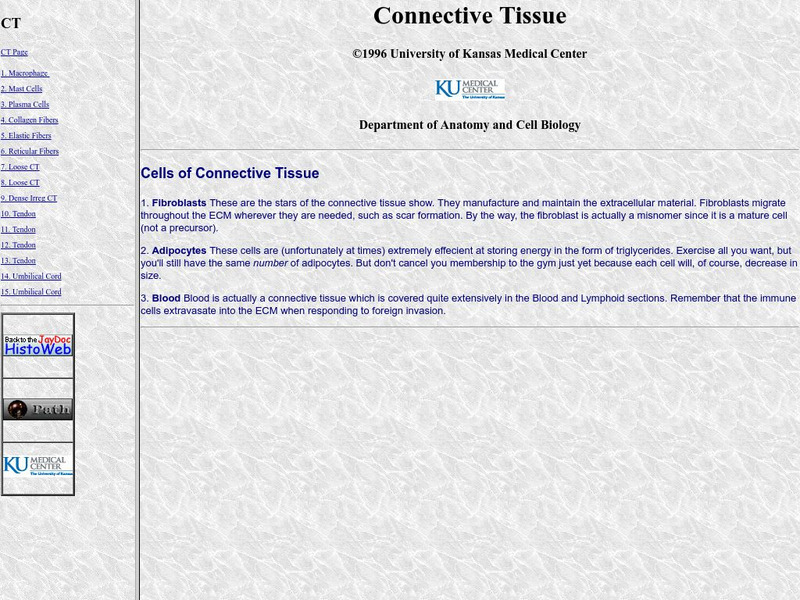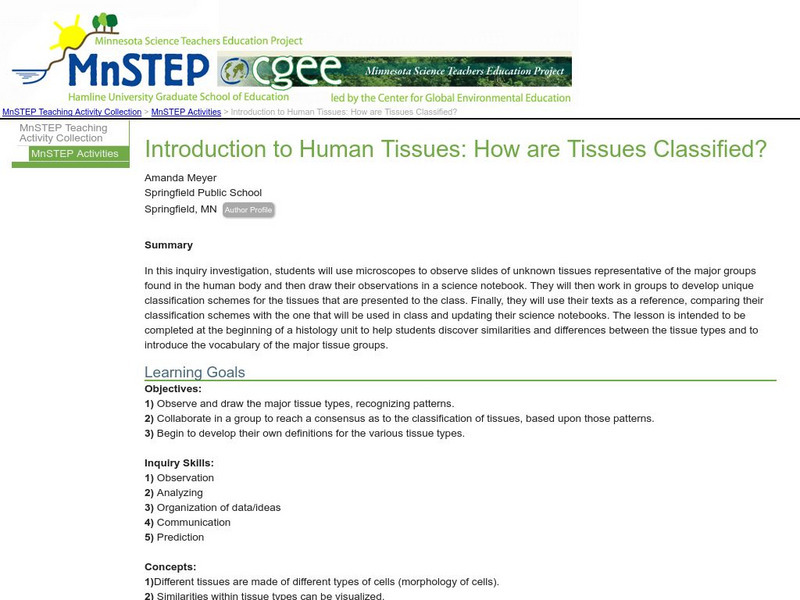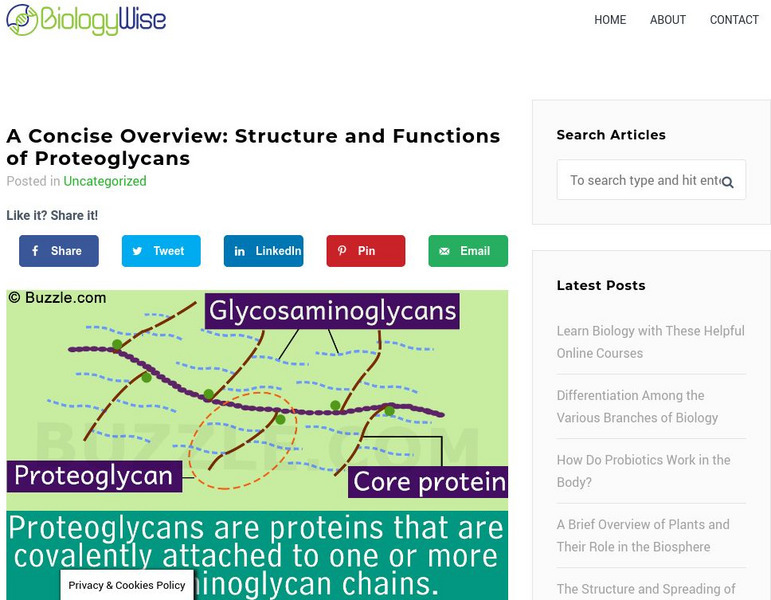Science Matters
Hierarchy
A system is only as good as the sum of its parts! Young scholars explore the components of the different body systems using a hands-on lesson. The lesson helps learners build an understanding that there is a hierarchy of components in...
Science Matters
Post- Assessment: Transport Systems in Animals and Plants
A little bit of this and a little bit of that. The final lesson of the 21-part unit assesses learners on each animal and plant system. The test covers the basics of each system and focuses on key vocabulary from the unit.
Curated OER
Body Tissue
Human anatomy learners will grow more knowledgable about body tissue by viewing this presentation. Injected with a little humor (e.g. using a toilet paper roll graphic in place of the word "tissue"), it is sure to keep them engaged. The...
Curated OER
Tissues
Complete with teachers' notes for most of the slides, this is a tremendous presentation of the four types of tissues: epithelial, connective, nerve, and muscle. Each is displayed with pertinent vocabulary and photos of microscope slides...
Curated OER
Animal Structure and Function
Take a look at the levels of organization and methods of homeostasis in living things. This instructional activity requires biology enthusiasts to list categories of animal tissues, connective tissues, and muscle tissues. It has them...
Curated OER
The Animal Body and How it Moves
Spark interest in the body structure of vertebrates with this comprehensive and colorful worksheet. Your biology class will explore the levels of organization, primary tissue types, and the main organ systems. Finally, they hone in on...
Curated OER
Tissue Types
In this tissue worksheet, students are given a matrix with the major tissues, the specific types of tissue and the location of each tissue in the body. Students complete the missing components of the chart with either the major tissue,...
Curated OER
Bones: The Body's Support
In this bones worksheet, students compare the axial and the appendicular skeletons. Students also review the bone components. This worksheet has 6 matching, 8 short answer, 4 fill in the blank, and 6 true or false questions.
National Cancer Institute at the National Institutes of Health
Seer Training Modules: Cells, Tissues, and Membranes
Self-guided learning activity where students learn about cell structure and function, different types of tissues, and various kinds of membranes in the body. There is a short quiz at the end of the lesson to check for understanding.
Aetna Intelihealth
Aetna: Inteli Health: Rheumatoid Arthritis
Thorough overview of rheumatoid arthritis. Includes information on symptoms, prevention, treatment, and much more.
OpenStax
Open Stax: Anatomy and Physiology: Types of Tissues
The term tissue is used to describe a group of cells found together in the body. Although there are many types of cells in the human body, they are organized into four broad categories of tissues: epithelial, connective, muscle, and...
OpenStax
Open Stax: Anatomy and Physiology: Connective Tissue
One of the major functions of connective tissue is to connect tissues and organs. Learn all about connective tissue here.
Aetna Intelihealth
Aetna: Inteli Health: Arthritis Overview
Detailed description of how joints work and how arthritis affects them. Good look at the biology behind arthritis.
University of Kansas Medical Center
University of Kansas Medical Center: Connective Tissue
Examine these specimens of connective tissue from the human body.
Science Education Resource Center at Carleton College
Serc: Introduction to Human Tissues: How Are Tissues Classified?
In this investigation, young scholars will observe slides of unknown tissues and then draw their observations in a science notebook. They will then work in groups to reach a consensus as to the classification of tissues. This lesson is...
University of Nebraska Omaha
University of Nebraska: Connective Tissues
Areolar, dense, elastic, reticular, and adipose connective tissue are delved into in this effective site. The text is supplemented with pictures of the connective tissue.
BiologyWise
Biology Wise: Structure and Functions of Proteoglycans
Proteoglycans are a type of protein that help in maintaining the integrity of connective tissue. Their chemical structure is quite complex and is explained here with the aid of labeled illustrations. Their functions in the support of...
Khan Academy
Khan Academy: Inherited Disorders: Marfan Syndrome
Practice test questions over the inherited disorder Marfan syndrome.
Estrella Mountain Community College
Estrella Community College: Animal Cells and Tissues
Notes on different tissues of the body such as: connective, epithelial, muscle, and nervous. Helpful terms and definitions as well as review questions. Colorful graphics of important terms are also provided.
Wikimedia
Wikipedia: Collagen
Wikipedia provides this encyclopedia article about collagen and its purpose in the human body.
Exploring Nature
Exploring Nature Educational Resource: 4 Basic Tissue Types in the Human Body
Facts about four basic types of tissues in the human body and their functions.
My Science Site
Bj's Science: Epithelia, Connective Tissue, and Nervous Tissue [Pdf]
Reference sheet providing colorful illustrations of the different cell types that make up tissues.
Texas Heart Institute
Texas Heart Institute: Heart Information Center: Marfan Syndrome
One-page article answers questions about Marfan syndrome: its causes, risk factors, symptoms, diagnosis, and treatment.
BiologyWise
Biology Wise: Difference Between Glycoproteins and Proteoglycans
Explains that glycoproteins and proteoglycans are components of the extracellular matrix and presents a table highlighting the differences between them.

















